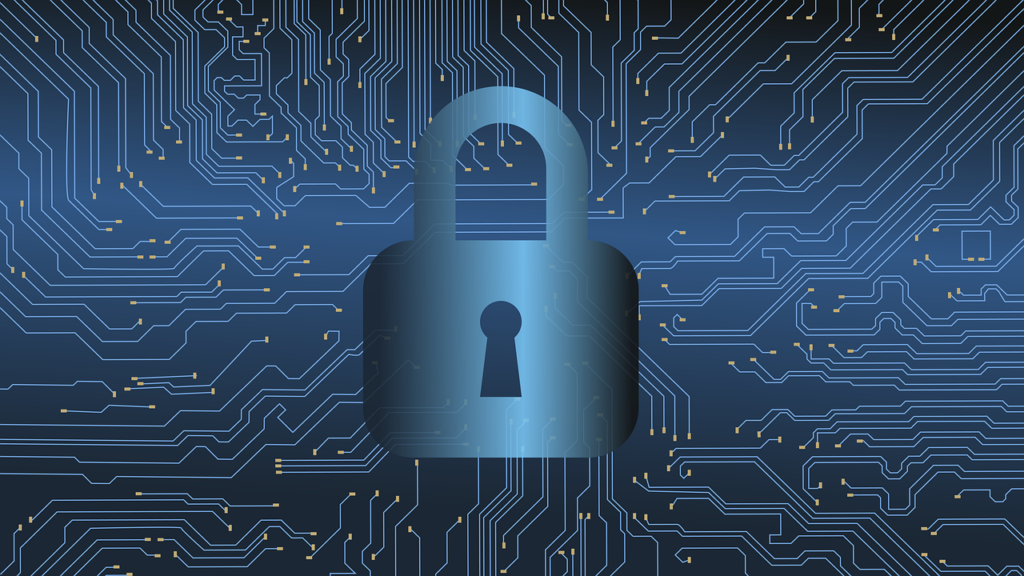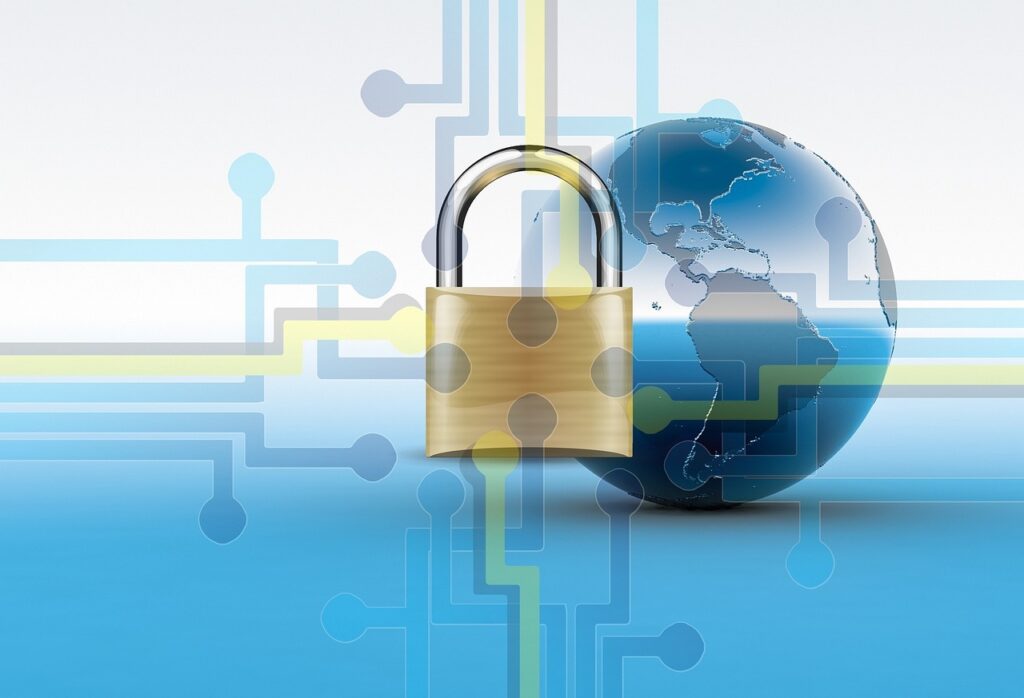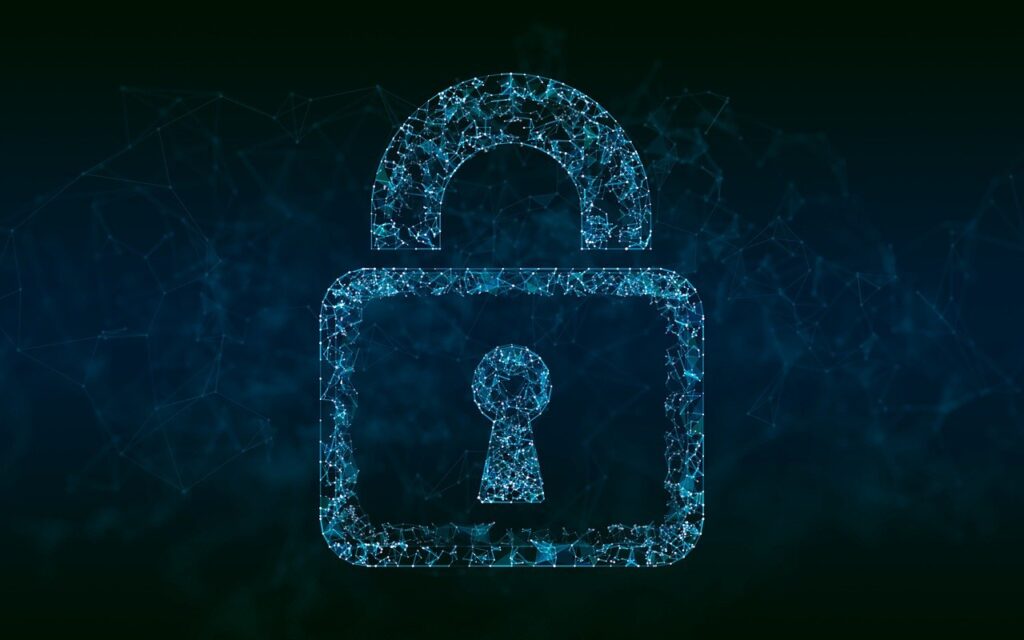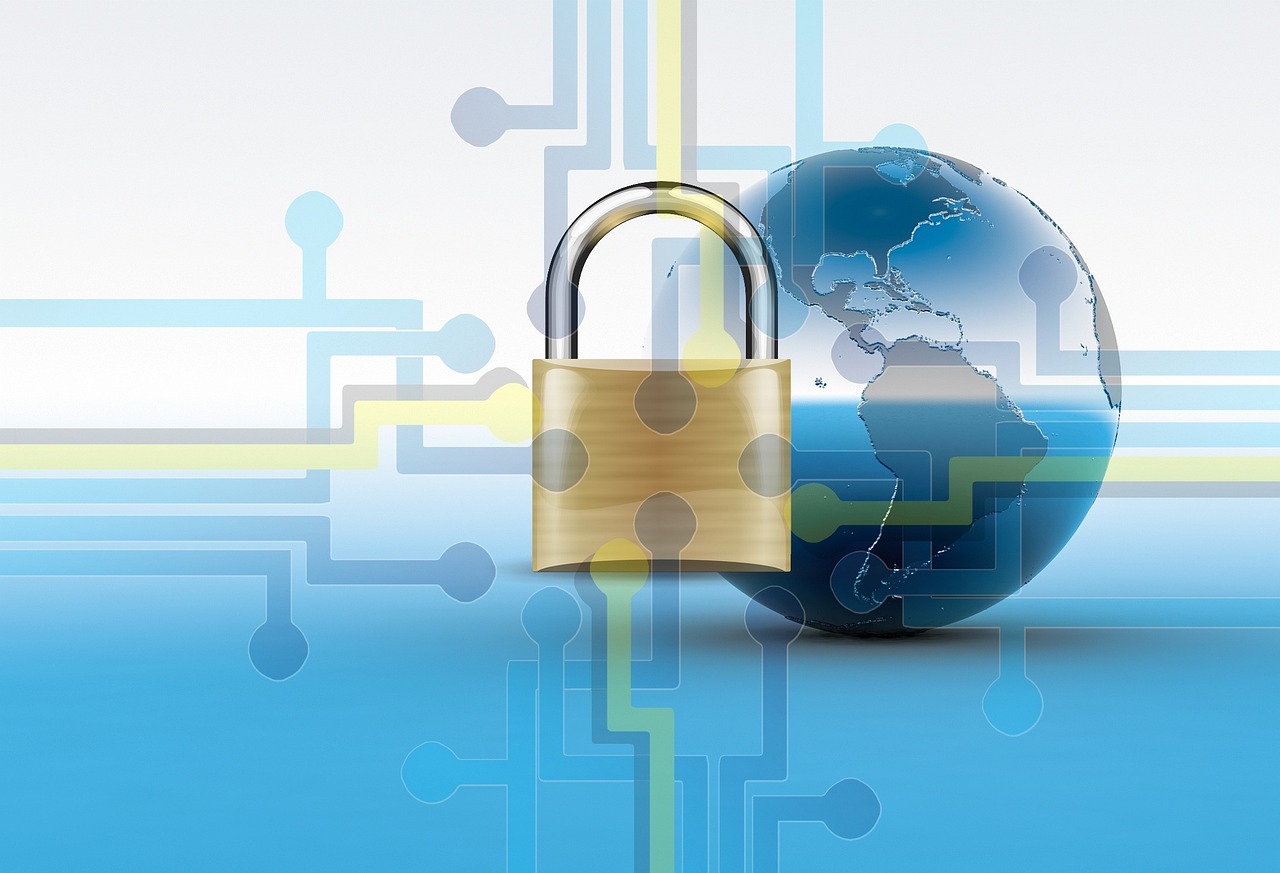Inflation Monster, your go-to source for all things related to inflation, is here to shed light on the fascinating world of cybersecurity and its interconnectedness with the ever-evolving landscape of inflation. No longer confined to just traditional monetary systems, inflation has now infiltrated the digital realm, posing new challenges and threats that demand our attention. Join us on this illuminating journey as we explore the intricate relationship between inflation and cybersecurity, uncovering the strategies and safeguards needed to protect ourselves from the lurking dangers of the online world. Get ready to stay one step ahead in the battle against the inflation monster in this dynamic era of technology and finance.

The Basics of Inflation
Definition of inflation
Inflation refers to the sustained increase in the general level of prices of goods and services in an economy over a period of time. When there is inflation, the purchasing power of money decreases, as it now allows us to buy fewer goods and services than before. Inflation is often measured by the annual percentage change in consumer price indices, such as the Consumer Price Index (CPI) or the Producer Price Index (PPI).
Causes of inflation
There are several factors that can contribute to inflation. Some of the main causes include:
-
Demand-Pull Inflation: This occurs when there is an increase in aggregate demand for goods and services, which outpaces the economy’s ability to supply them. As a result, the prices of goods and services rise.
-
Cost-Push Inflation: This type of inflation occurs when there is an increase in production costs, such as wages or raw material prices, which leads to higher prices for finished goods and services.
-
Monetary Inflation: This type of inflation occurs when there is an increase in the money supply in the economy, which can lead to an increase in prices. This often happens when central banks engage in expansionary monetary policies, such as quantitative easing.
Types of inflation
Inflation can be categorized into different types based on its intensity and causes:
-
Mild Inflation: This refers to a low and manageable rate of inflation, usually in the range of 1-3% per year. Mild inflation is often considered healthy for an economy as it encourages spending and investment.
-
Moderate Inflation: Moderate inflation occurs when the rate of price increase is higher than mild inflation but still under control. This range is typically between 3-6% per year.
-
High Inflation: High inflation occurs when the rate of price increase reaches double digits, often exceeding 10% per year. High inflation can have severe consequences for an economy, eroding purchasing power and creating economic instability.
-
Hyperinflation: Hyperinflation is an extreme form of inflation characterized by extremely rapid price increases. It usually occurs during times of economic and political instability. Hyperinflation can lead to the collapse of a country’s currency and severe economic distress.
The Impact of Inflation on Cybersecurity
Increase in cyberattacks
Inflation can have a significant impact on the cybersecurity landscape. As inflation erodes the purchasing power of individuals and businesses, it creates financial incentives for cybercriminals to exploit vulnerabilities and carry out cyberattacks. With the rising cost of living and economic pressures during inflationary periods, cybercriminals see an opportunity to profit from stealing sensitive information, conducting ransomware attacks, or engaging in other malicious activities.
Impact on cybersecurity measures
Inflation can also impact the effectiveness of cybersecurity measures. As the cost of goods and services increases, organizations may face budget constraints in implementing robust cybersecurity measures. Business leaders may be tempted to reduce investment in cybersecurity to allocate resources to other critical areas. This can lead to a weakened cybersecurity infrastructure, making organizations more vulnerable to cyber threats.
Cost of cybersecurity in inflationary environments
Inflation can significantly impact the cost of cybersecurity. With inflation, the prices of cybersecurity technologies, tools, and services also tend to rise. Organizations may face increased costs in acquiring and maintaining cybersecurity solutions, along with higher expenses for training and hiring cybersecurity professionals. Furthermore, the costs associated with recovering from cyberattacks, such as incident response, forensic investigations, and legal proceedings, can also increase during inflationary periods.

Evolution of Cybersecurity in the Digital Age
Introduction of cybersecurity
Cybersecurity emerged as a field of study and practice in response to the growing threats posed by cybercrimes and the need to protect sensitive information. With the advent of the digital age and the rapid growth of the internet, cybersecurity became a vital aspect of organizational operations and personal privacy.
Advancements in cybersecurity technology
Over the years, cybersecurity technology has evolved to keep pace with the ever-changing and sophisticated cyber threats. Advancements in areas such as artificial intelligence, machine learning, and data analytics have revolutionized the field of cybersecurity. These technologies enable organizations to detect and respond to cyber threats in real-time, enhance threat intelligence, and automate security operations.
Challenges faced by cybersecurity in combating inflationary effects
Despite the advancements in cybersecurity technology, the field still faces numerous challenges in combating the effects of inflation. The rising costs associated with implementing and maintaining cybersecurity measures can strain the resources of organizations, especially smaller businesses. Additionally, cybercriminals continuously adapt their tactics to exploit new vulnerabilities, making it essential for cybersecurity professionals to stay ahead of the curve in their defense strategies.
Inflation and the Rise of Cyber Threats
Impact of inflation on cyber threats
Inflation can lead to an increase in cyber threats due to various factors. During inflationary periods, individuals and organizations may become financially strained, making them more susceptible to fraudulent schemes and phishing attacks promising economic relief. The desperation to secure funds or assets during times of inflation can drive individuals to participate in cybercrime or fall victim to cyber scams.
Increase in cybercrime during inflationary periods
Historically, there has been evidence of an increase in cybercriminal activities during inflationary periods. As the value of money declines, cybercriminals perceive greater rewards in engaging in activities like ransomware attacks, data breaches, or financial fraud. Inflation creates an environment where cybercrime can flourish, as individuals and organizations are more vulnerable due to financial distress and increased reliance on digital platforms.
Relationship between inflation and cyber threats
The relationship between inflation and cyber threats is complex and multifaceted. Inflation can create conditions that promote cyber threats, but inflation itself is not the direct cause of cyber threats. Rather, it is the economic and psychological effects of inflation that contribute to an increase in cybercriminal activities. Understanding this relationship is crucial for developing effective cybersecurity strategies that address the underlying factors driving cyber threats during inflationary periods.

Inflation and the Vulnerability of Financial Systems
Effects of inflation on financial systems
Inflation can significantly impact financial systems. As the value of money decreases, it erodes the purchasing power of individuals and businesses. This can lead to a decrease in consumer spending, investment, and overall economic activity. Inflation can also create volatility in financial markets, affecting asset prices, interest rates, and exchange rates. These fluctuations in the financial system can potentially expose vulnerabilities and increase the risk of financial fraud and cyberattacks.
Cybersecurity risks for financial institutions
Financial institutions, such as banks, insurance companies, and investment firms, are prime targets for cybercriminals due to the sensitive nature of their operations and the potential for significant financial gain. In an inflationary environment, the cybersecurity risks for financial institutions can increase. This is because financial instability and economic pressures during inflation can amplify the motivation for cybercriminals to target financial systems, aiming to exploit vulnerabilities and gain unauthorized access to funds, customer data, or intellectual property.
Mitigation strategies for financial systems
To mitigate cybersecurity risks in financial systems during inflationary periods, proactive cybersecurity measures are necessary. Financial institutions must prioritize robust cybersecurity practices, such as implementing multi-factor authentication, encryption, and intrusion detection systems (IDS). Regular security assessments, employee training programs, and incident response plans should also be put in place to ensure a swift response in the event of a cyberattack. Collaboration and information sharing among financial institutions, regulatory bodies, and law enforcement agencies are critical to effectively combat cyber threats targeting financial systems.
Inflation, Hyperinflation, and Cybersecurity
Understanding hyperinflation
Hyperinflation is an extreme form of inflation characterized by an astronomical rise in prices. When a country experiences hyperinflation, the value of its currency rapidly declines, resulting in a loss of confidence in the monetary system. Hyperinflation is often associated with political instability, economic mismanagement, and the collapse of institutions.
Hyperinflation’s impact on cybersecurity
Hyperinflation can have a severe impact on cybersecurity. As the economy spirals into chaos, businesses struggle to maintain operations and meet financial obligations. The collapse of the economy can lead to a breakdown in cybersecurity infrastructure, making it easier for cybercriminals to exploit vulnerabilities and carry out attacks. The scarcity of resources during hyperinflation can further hamper efforts to implement comprehensive cybersecurity measures, leaving organizations and individuals even more vulnerable to cyber threats.
Challenges faced in ensuring cybersecurity during hyperinflation
Ensuring cybersecurity during hyperinflation presents unique challenges. The economic and social upheaval that accompanies hyperinflation often hinders the establishment of effective cybersecurity practices. Scarce resources, a lack of government stability, and disrupted communication networks can make it difficult to implement robust cybersecurity measures. However, given the increased incentives for cybercriminals to exploit vulnerabilities during hyperinflation, it becomes even more crucial to address these challenges and prioritize cybersecurity to protect individuals, businesses, and critical infrastructures.
Regulatory Measures in the Face of Inflationary Cyber Threats
Role of governments in addressing cyber threats during inflation
Governments play a crucial role in addressing cyber threats during inflationary periods. They have the responsibility of ensuring the security and stability of the economy. Governments can enact legislation to protect individuals and organizations against cybercrime, establish regulatory frameworks for cybersecurity, and enforce penalties for cybercriminal activities. Additionally, governments can collaborate with international organizations, other governments, and the private sector to share information, develop best practices, and promote cybersecurity awareness and education.
Enhancing cybersecurity regulations and policies
Inflationary periods necessitate the enhancement of cybersecurity regulations and policies. Governments should work closely with regulatory bodies to introduce and enforce regulations that require organizations to adopt strong cybersecurity practices. This can include mandating the use of encryption, conducting regular security assessments, and implementing incident response plans. Governments should also invest in cybersecurity awareness campaigns to empower individuals and businesses with the knowledge to protect themselves against cyber threats.
Collaboration between industries and governments
Collaboration between industries and governments is essential to address the evolving cyber threats during inflationary periods. Industries can share intelligence and best practices with one another and with government agencies. Governments can establish public-private partnerships that facilitate information sharing, joint research and development efforts, and the development of innovative cybersecurity solutions. By working together, industries and governments can strengthen their cybersecurity capabilities and effectively combat cyber threats in an inflationary environment.
Future Trends in Cybersecurity Amidst Inflation
Emerging technologies to combat cyber threats during inflation
Emerging technologies hold promise for combating cyber threats during inflationary periods. Artificial intelligence (AI) and machine learning (ML) can provide advanced threat detection capabilities, automating the detection and response to cyber threats in real-time. Blockchain technology offers opportunities for secure and transparent transactions, reducing the risk of financial fraud. As inflation continues to pose challenges to cybersecurity, the adoption and integration of these emerging technologies will play a vital role in maintaining a robust cybersecurity posture.
Importance of proactive cybersecurity measures
In an inflationary environment, proactive cybersecurity measures are paramount. Organizations must adopt a proactive mindset by anticipating and preparing for cyber threats before they occur. This includes continuous monitoring of networks and systems for vulnerabilities, conducting regular security assessments, and implementing real-time threat intelligence. By taking a proactive approach, organizations can stay ahead of cybercriminals and minimize the impact of cyber threats on their operations and stakeholders.
Integration of AI and machine learning in cybersecurity
The integration of AI and machine learning in cybersecurity is transforming how organizations defend against cyber threats. These technologies can analyze vast amounts of data, identify patterns, and detect anomalies in real-time. AI-powered systems can automate security operations, enhancing the efficiency and effectiveness of cybersecurity measures. Machine learning algorithms can continuously learn from new threats and adapt their defenses accordingly. As inflationary pressures increase the complexity and frequency of cyber threats, the integration of AI and machine learning will become indispensable in safeguarding organizations’ digital assets.
Cybersecurity as a Tool in the Fight Against Inflation
Role of cybersecurity in protecting against inflation
Cybersecurity plays a crucial role in protecting against the adverse effects of inflation. By safeguarding digital assets, sensitive data, and critical infrastructure, cybersecurity helps maintain trust and confidence in digital transactions. Cybersecurity measures ensure the integrity, availability, and confidentiality of information, mitigating the risks associated with financial fraud, cybercrime, and economic instability. Organizations that prioritize cybersecurity contribute to the stability and resilience of the economy, protecting against the erosion of wealth and the negative impacts of inflation.
Importance of secure financial transactions
Secure financial transactions are essential during inflationary periods. As the value of money declines, individuals and businesses rely on digital and online transactions for their financial activities. Ensuring the security of these transactions is vital to prevent financial fraud, unauthorized access to funds, and identity theft. Cybersecurity measures such as encryption, secure authentication, and real-time transaction monitoring are crucial in maintaining the integrity and trustworthiness of financial transactions amidst inflation.
Cybersecurity’s contribution to maintaining economic stability
Cybersecurity contributes significantly to maintaining economic stability during inflationary periods. By protecting critical infrastructures and systems, cybersecurity safeguards businesses’ operations, supply chains, and communication networks. This promotes investor confidence, sustains economic activity, and prevents disruptions that can exacerbate inflationary pressures. Additionally, effective cybersecurity measures help in the recovery and resilience of the economy by minimizing the impact of cyber threats, fostering innovation, and creating a secure environment for digital transformation.
Conclusion
In conclusion, inflation and cybersecurity are intricately connected in today’s digital age. As inflation persists and evolves, it poses new and ever-growing challenges to cybersecurity. The rise of cyber threats during inflationary periods necessitates proactive measures to protect individuals, organizations, and critical infrastructure from financial losses, reputational damage, and other detrimental consequences. Governments, industries, and individuals must collaborate to enhance cybersecurity regulations, share information, and adopt emerging technologies to mitigate the impact of cyber threats amidst inflationary pressures. Constant adaptation, investment, and education in cybersecurity are vital to ensure the ongoing protection of digital assets and the maintenance of economic stability.




